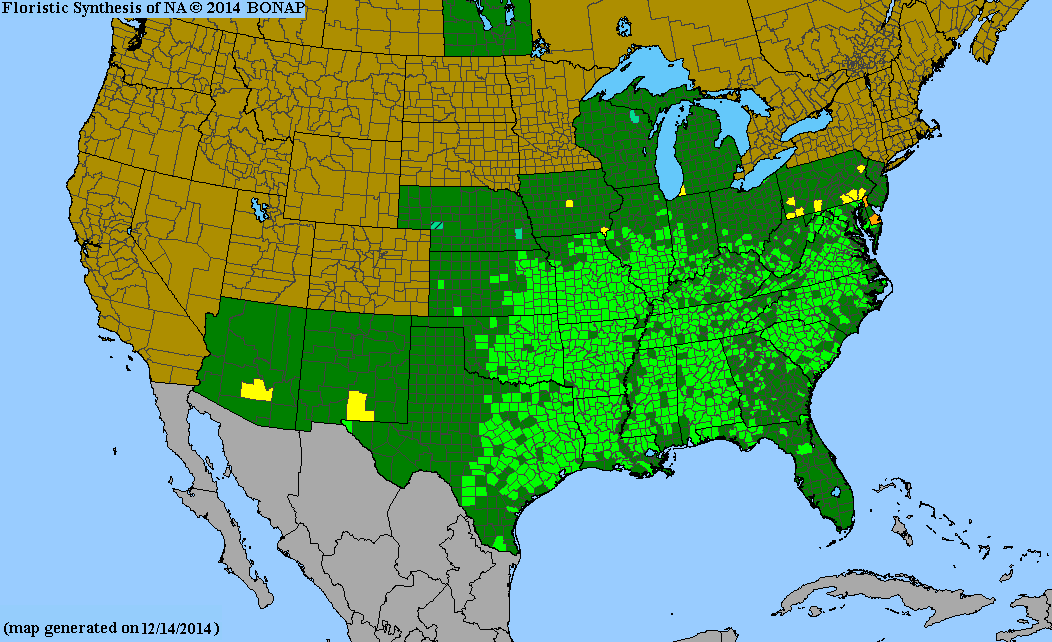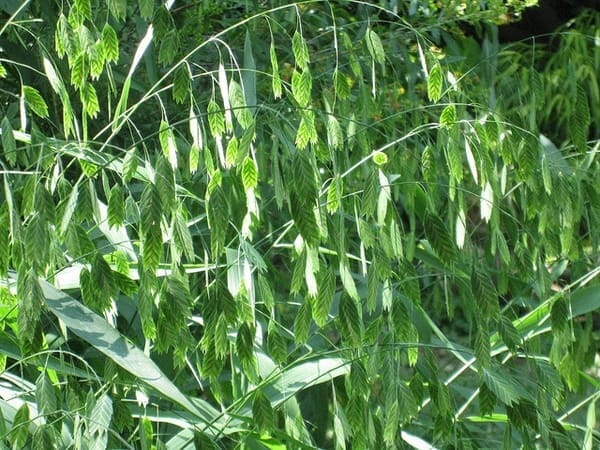Poaceae
river oats
Chasmanthium latifolium
Synonyms
Previously known as Uniola latifolia
Other Common Names
fish-on-a-pole, inland sea oats
Plant Type
Grass/Grass-like
Life Cycle
Perennial
Typical Size
3-4 ft. tall
2-3 ft. wide
Tolerant of
Occasional Flooding
Inolerant of
Direct Afternoon Sun
Propagation
By seed
Plant Propagation Notes
Self seeds easily
Plants/Diseases
No serious insect or disease problems.
Wildlife Benefits
Host plant for butterfly larvae, Fruit/seeds for birds
Leaves
Leaves simple, lanceolate arranged alternately on stem. Leaf margins entire, 5-9 inches long and 1 inch wide. Leaves grow upright to slightly arching and turn a yellow-copper in the fall, fading to brown in the winter.
Flowers
Flowers are arranged in an open panicle with branches nodding or drooping. It is initially green, turning brown at maturity. Each spikelets is up to 1-1/2 inches long and over 1/2 inch wide, with anywhere from 6 to 17 florets. Flowers bloom from June to October and are wind pollinated.
Toxicity
No known toxicity.

USDA Hardiness Zones
5, 6, 7, 8, 9
Light Exposure
Part Sun/Shade, Full Shade
Soil Moisture
Moist
Soil Drainage
Well-drained
Native in South Carolina?
Yes
Plant Native Habitat
Chasmanthium latifolium grows along stream and river banks and in rich deciduous woods.
Global Conservation Status (NatureServe)
Secure (G5)
Federal Conservation Status (USFWS)
Not Listed
Distribution Notes
Common in the SC Coastal Plain and Piedmont, and Uncommon in the Mountains

